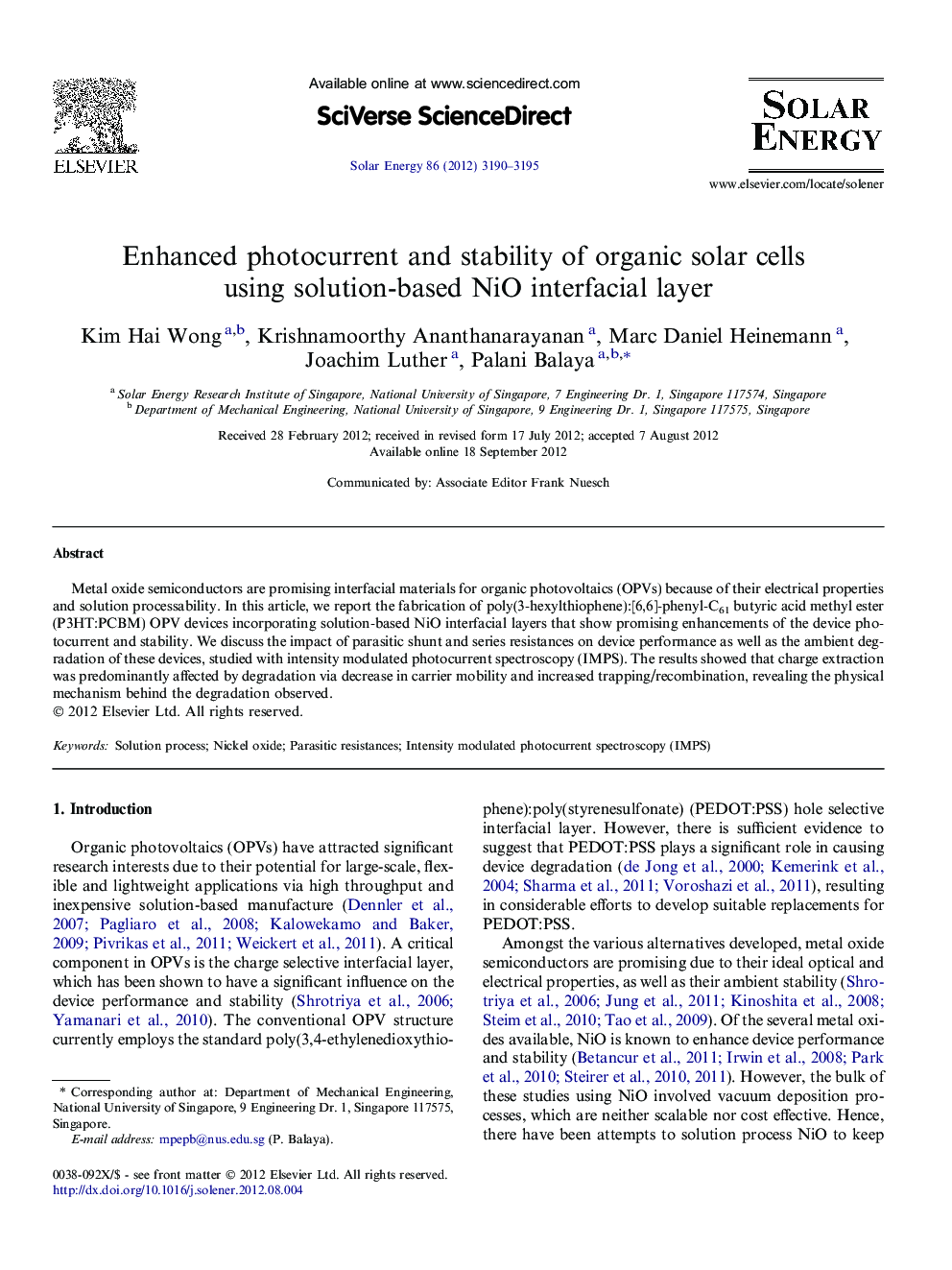| Article ID | Journal | Published Year | Pages | File Type |
|---|---|---|---|---|
| 1550796 | Solar Energy | 2012 | 6 Pages |
Metal oxide semiconductors are promising interfacial materials for organic photovoltaics (OPVs) because of their electrical properties and solution processability. In this article, we report the fabrication of poly(3-hexylthiophene):[6,6]-phenyl-C61 butyric acid methyl ester (P3HT:PCBM) OPV devices incorporating solution-based NiO interfacial layers that show promising enhancements of the device photocurrent and stability. We discuss the impact of parasitic shunt and series resistances on device performance as well as the ambient degradation of these devices, studied with intensity modulated photocurrent spectroscopy (IMPS). The results showed that charge extraction was predominantly affected by degradation via decrease in carrier mobility and increased trapping/recombination, revealing the physical mechanism behind the degradation observed.
► Solution-based NiO layer for enhanced photocurrent and stability of OPV devices. ► The influence of parasitic resistances on OPV device performance is discussed. ► Intensity modulated photocurrent spectroscopy (IMPS) was used to study stability. ► IMPS results are discussed in terms of charge transport and trapping.
